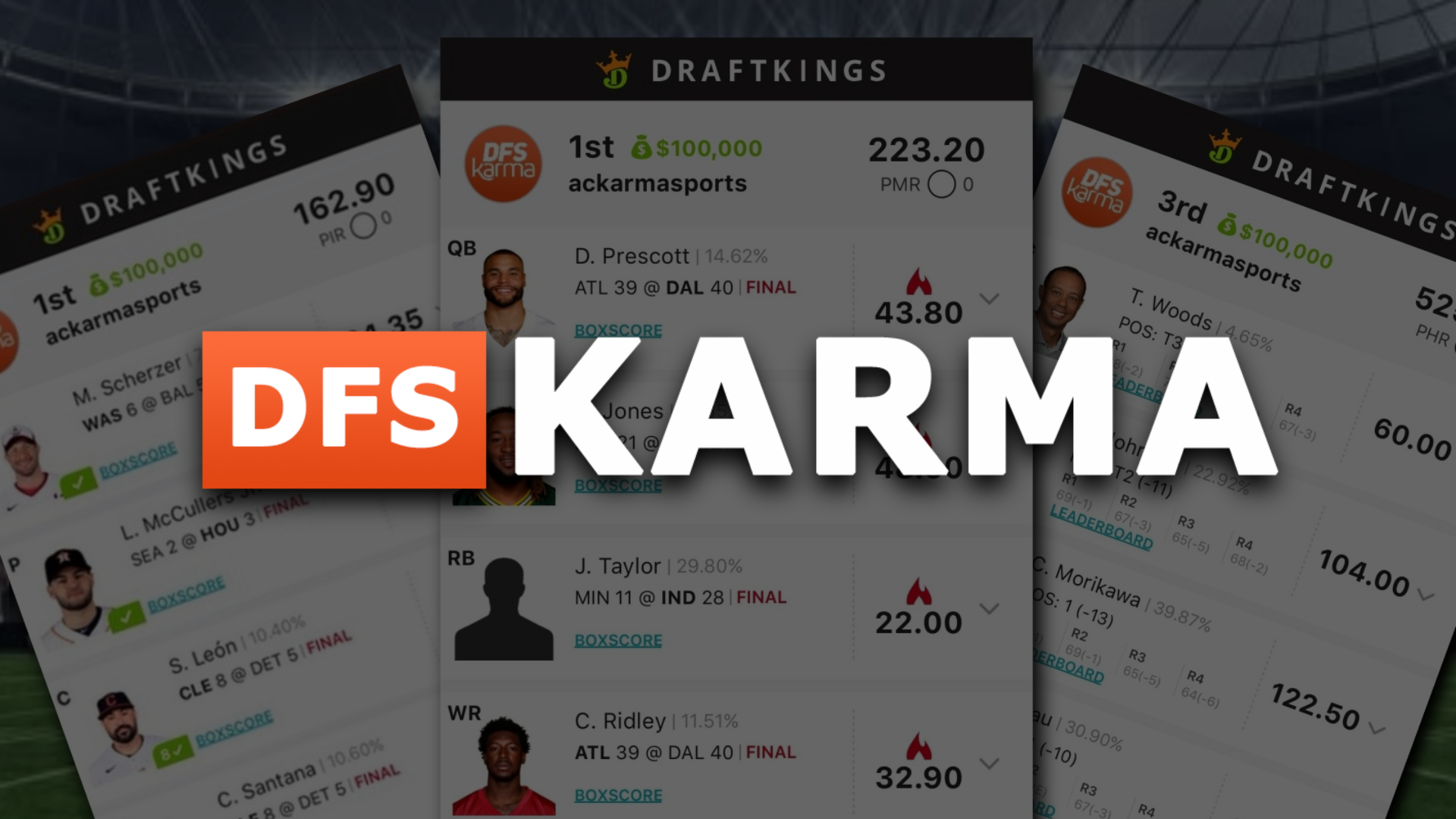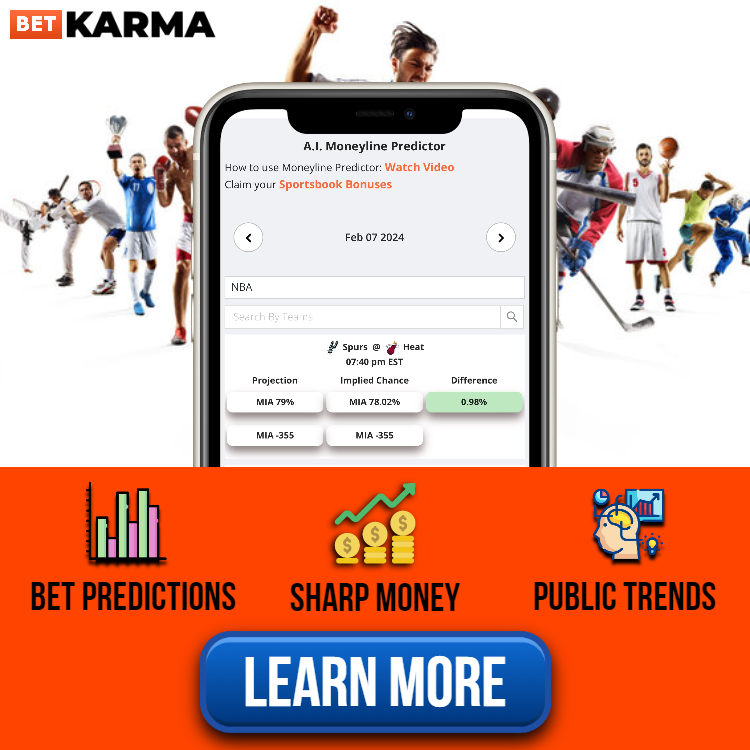
Editor’s Note:
Jock MKT is our newest fantasy partner, allowing you to combine daily fantasy sports and the stock market. You can buy and sell shares of players through two phases – the IPO and Live Trading. The stock of players either rises or drops based on that night’s performance and how they score compared to the other available players. Download their app by clicking HERE and be sure to use promo code KARMA to get a $50 bonus (100% match).
You can learn more about the scoring, contests, and all other basics at the link below:
Jock MKT MLB Live Trading
If you read my first Jock MKT MLB Strategy article, you know I prefer to buy players during the IPO rather than the Live Trading phase. With that being said, there are opportunities, especially for riskier investors, to make plenty of money during the Live Trading phase.
The Basics
The Live Trading phase begins as soon as the IPO phase ends. Once the IPO is over, buyers can put in bids for any player on the slate, while holders can post their respective ask, or the minimum they’re willing to accept, for each player.
For more information on these phases, check out our “How to” article for Jock MKT.
MLB is different from the majority of other sports, as hitters aren’t consistently in a position to score fantasy points. They generally see 3-5 at-bats per game, depending on how well the offense is doing overall. You won’t be forced to make a snap decision in the same way you may be in NFL if the opponent goes 3-and-out or in NBA if a star only receives a 2-minute break on the bench. You’ll generally have at least an inning to decide from one at-bat to the next, although you’ll need to keep track of what happens prior to when the player you’re looking into comes to the plate.
Buying
Once the IPO closes, everyone already has the players they wanted, as they won them based on the highest bidding. That means the ask skyrockets in these situations. You could’ve gotten any player in the IPO for cheaper than you would pay immediately after it locks, eliminating this as a time to buy any shares of players.
Instead, you’ll have to wait. With the volatility of baseball and the limited opportunities, holders generally seem more likely to hold their players early in the game, especially if they are hitting high in the order. For example, if Fernando Tatis lines out to the shortstop in his first at-bat, there’s very little reason to sell him for less than you purchased him at that point. He’s a threat to score fantasy points in any situation and likely wasn’t going to have a perfect game regardless. So who or when should I be targeting?
Power hitters that have struggled early in games. Let’s say Joey Gallo starts a game 0-2 and the Texas Rangers haven’t performed well, so he won’t see his third at-bat until the seventh inning. He owns 1 fantasy point (FP) entering his third at-bat. He’ll be one of the lowest scorers on the slate, potentially opening a buying opportunity. If you purchase him before this at-bat and he hits a home run, he’d boast 9.5 FPs at that point. In the 7/11 Market, the difference between 1 and 9.5 FPs was $1.75 to $7.25. Although you wouldn’t be able to buy his shares as low as even $2, you wouldn’t have to pay $7.25 for them either. Keep in mind, Gallo would then likely have one more opportunity for an at-bat in most situations.
Home runs will always be a key to finding success on Jock MKT. Any individual player receives 8.5 FPs for a solo home run. The next best hit – a triple – receives 3.5 FPs. Although you may not necessarily need home runs for players to hit value. Continuing the Gallo, example, let’s assume you purchased 5 shares at $4.50 each after his 0-2 start. He’d have needed to score 6.5 FPs on the 7/11 Market for you to break even.
There are situations where you may be able to find holes in the market, though. If you’re following a game closely, you may be able to get value near your hitter’s at-bat. Prior to Gallo’s plate appearance, there could be runners on, giving him RBI opportunities. The more runners on in any situation, the better for the batter, as each RBI is worth 2 FPs. Keep an eye on situations where others may not update their prices to reflect the next range of outcomes will be a key to finding success in the Live Trading phase.
Overall, buying during the Live Trading for MLB is extremely risky. That isn’t to say you can’t find success, but it’s important to understand the risk you’re taking on with limited at-bats and variance in baseball.
Selling
Similar to buying, you won’t be able to trade early in the Live Trading phase. Once the IPO closes, bids will come in significantly lower than you paid for any particular player. You’ll have to wait until further in the night to sell any shares.
Obvious to some, selling is virtually the opposite of buying. When a player finds early success in a game, you can sell them to guarantee yourself profit for that night.
For example, if Trea Turner hits a home run in his first at-bat, he’s already recorded 8.5 FPs. In this instance, he’s playing on the road against the Miami Marlins. It’ll be early in the night, and Turner probably shot up the scoreboard, sitting in first. You now have two options – sell shares for a profit from what you paid or hold and hope he continues to find success.
There is the possibility that Turner continues to find elite success, maybe recording 3 more hits, stealing 2 bases, or recording another home run. In this situation, you’re hoping for him to place near the top of the scoreboard, giving you $10+ on each share you own. That would be the ideal scenario.
The other possibility is that Turner goes 0-3 in his final 3 at-bats with a trio of strikeouts, losing 1.5 FPs throughout the night. Using the 7/11 Market, he’d end up with 7.5 FPs, ending at only $5.25, which is likely less than you paid for him in the IPO. Although these two examples are drastic and the most likely situation is that he doesn’t find elite success or strike out 3 times to finish the game. He’s likely to end somewhere in the middle.
Your decision on selling comes from your risk tolerance. If you want a ceiling night with the opportunity to end the night with $25 per share with Turner, you obviously want to hold, knowing that he could struggle to end the game. If you want to build your bankroll, you should quickly flip Turner for a profit, moving onto the next slate (or other shares).
Keep in mind, you could also sell some of your shares to recoup some money while also giving yourself an opportunity to drastically increase your bankroll. Say you bought 10 shares of Turner for $5.50 during the IPO and someone offers $7.50 per share after his first-inning home run, you could sell half of your shares to recoup $37.50 of your $55. The remaining money will be returned after the slate ends, as he’s almost guaranteed to end worth more than $3.50 per share by the end of the slate.
There are several ways to consider buying and selling during the Live Trading phase. Nearly all of them are determined by your risk tolerance, though, and you’ll need to fully understand your strategy prior to going into the slate.











